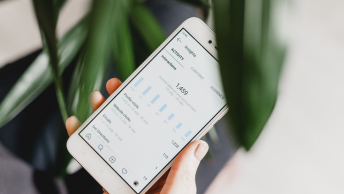Digital marketing strategies seem to change with the seasons. Businesses focus on keeping up with these changes and, as a result, measurement is often left on the back burner.
Relevance is the key to any digital marketing strategy. To remain relevant, a brand must adopt the latest digital marketing strategies to appeal to consumers. Strategies such as content marketing, influencer marketing, and online advertising change based on current digital trends.
More importantly, brands that strive for relevance are tempted to leverage the latest tool– simply because it is new. A brand should take a step back before making a decision to leverage a new digital marketing tool or join a new platform. It’s important to review if the type of engagement on that platform is aligned with the overall business goal.
Before going down that rabbit hole, review how to measure your digital marketing strategy.
Simply put, if you effectively measure your digital marketing efforts, you won’t have to consider leveraging any new tools.
Your measurements will automatically reveal the proper plan of action.
Here are 5 ways to effectively measure your digital marketing strategy:
Let’s start with the basics…
1. Define Your Business Goals
Before going gangbusters on a new digital strategy that will catapult your brand to new heights, your business goals need to be defined.
Consider what success means to your business:
- Is it to raise awareness or increase revenues?
- Is it to increase customer retention or acquire new customers?
Remember, measure your digital marketing strategy to ensure it’s aligned with your business goals.
2. Describe Your Customer Segments

It’s easier to talk to someone if you know all about them. You understand what motivates them. You may even glean their disposition. But it’s more difficult to communicate when you don’t know your customers.
This applies to all aspects of the personal and professional relationships we maintain.
With your business in mind, understanding customers is certainly a success factor. To effectively target them in your digital campaigns, go one step further and understand the segments within your customer base.
More than likely, your customer base is diverse so it is important to describe each segment so you can create digital content that resonates.
Understanding your customers’ challenges will allow you to create highly relevant communications that will move them to action.
Build your measurement strategy around the challenges of each one.
3. Understand Your Customer Journey

If you’ve ever gone car shopping then you’re familiar with the sales reps saying: “What brings you in today?”. This is a qualifying question asked to understand your purchase intention. Then there are more follow-up questions asked as well.
All of this is done to better understand what brought you to that dealership and what challenges you’ve had with your vehicle search.
For your business, it is important to understand how each customer segment engages with you.
Do they research first on a mobile device? Do they consult a friend or colleague? Did they engage with your brand on social media?
Be sure to get a deeper understanding for your customer’s path to purchase and how it may differ for each segment.
4. Map Your Business Objectives to KPIs

Before connecting business objectives to KPIs, ask yourself what KPIs are needed to measure your customer’s interactions with your brand.
Mapping your business objectives to your digital KPIs are important when measuring your strategy.
You must consider, however, that not all KPIs make sense for each channel. For example, bounce rate is unimportant for mobile but more important for your website.
5. Establish Your Reporting

Determine the best way to report your digital marketing strategy to your business stakeholders. For stakeholders with less digital experience, consider reporting the overarching contribution of your digital efforts.
For those whom are well versed in digital, I would include reporting KPIs down to the platform and post level (i.e. Twitter > tweet).
Ensuring that the reporting is aligned with the business goals defined in step is what should be displayed in your reporting.
Final Thoughts
When you measure your digital marketing strategy, creating reports and sending them out every week is not enough. It’s about establishing a measurement process that is aligned with your overall business goals.
When done correctly, it ensures all digital marketing activities contribute to the bottom line.











